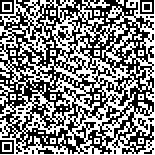本文已被:浏览 6037次 下载 0次
中文摘要: 摘 要:目的:探究多学科支持下的运动处方对老年 2 型糖尿病患者运动功能、骨骼肌量、肌力及血糖水平的改善效
果。方法:选取2020年1月—2022年11月河南省人民医院内分泌科收治的127例老年2型糖尿病患者作为研究对象,采用随
机数表法将其分为对照组 (n=63) 和观察组 (n=64)。对照组:实施常规护理管理;观察组:实施多学科支持下的运动处方
干预。对比两组患者的运动功能、骨骼肌量及肌力以及血糖水平。结果:干预后观察组糖化血红蛋白、空腹血糖低于对照
组,四肢运动功能评分、6 m步行速度、四肢骨骼肌质量 (ASM)、四肢骨骼肌质量指数 (ASMI)、握力均高于对照组,差异
有统计学意义 (P<0.05)。 结论:采用多学科支持下的运动处方对老年2型糖尿病患者进行干预,可有效控制患者的血糖水
平,提高其骨骼肌质量、肌力,促进患者运动能力的恢复。
Abstract:Abstract: OBJECTIVE To explore the effect of exercise prescription supported by multiple disciplines on elderly patients with
type 2 diabetes and its influence on skeletal muscle volume, motor function and muscle strength. METHODS 127 elderly patients
with type 2 diabetes mellitus from January 2020 to November 2022 were selected and grouped according to random number table
method. 63 patients in the control group were given routine nursing management, and 64 patients in the observation group were giv⁃
en exercise prescription intervention with multidisciplinary support. The motor function, skeletal muscle mass and muscle strength
and blood glucose level were compared between the two groups. RESULTS After intervention, HBA1c and fasting blood glucose in ob⁃
servation group were lower than those in control group, and limb motor function score, 6 m walking speed, ASM, ASMI and grip
strength were higher than those in control group, with statistical significance(P<0.05). CONCLUSION The intervention of exercise
prescription with multidisciplinary support in elderly patients with type 2 diabetes can effectively control the blood sugar level, im⁃
prove the quality and strength of skeletal muscle, and promote the recovery of exercise ability.
文章编号:3202110030 中图分类号:R587.1 文献标志码:
基金项目:
| 作者 | 单位 |
| 李洋菂,李旭娟,张燕双,刘亚雷 |
| Author Name | Affiliation |
引用文本:
